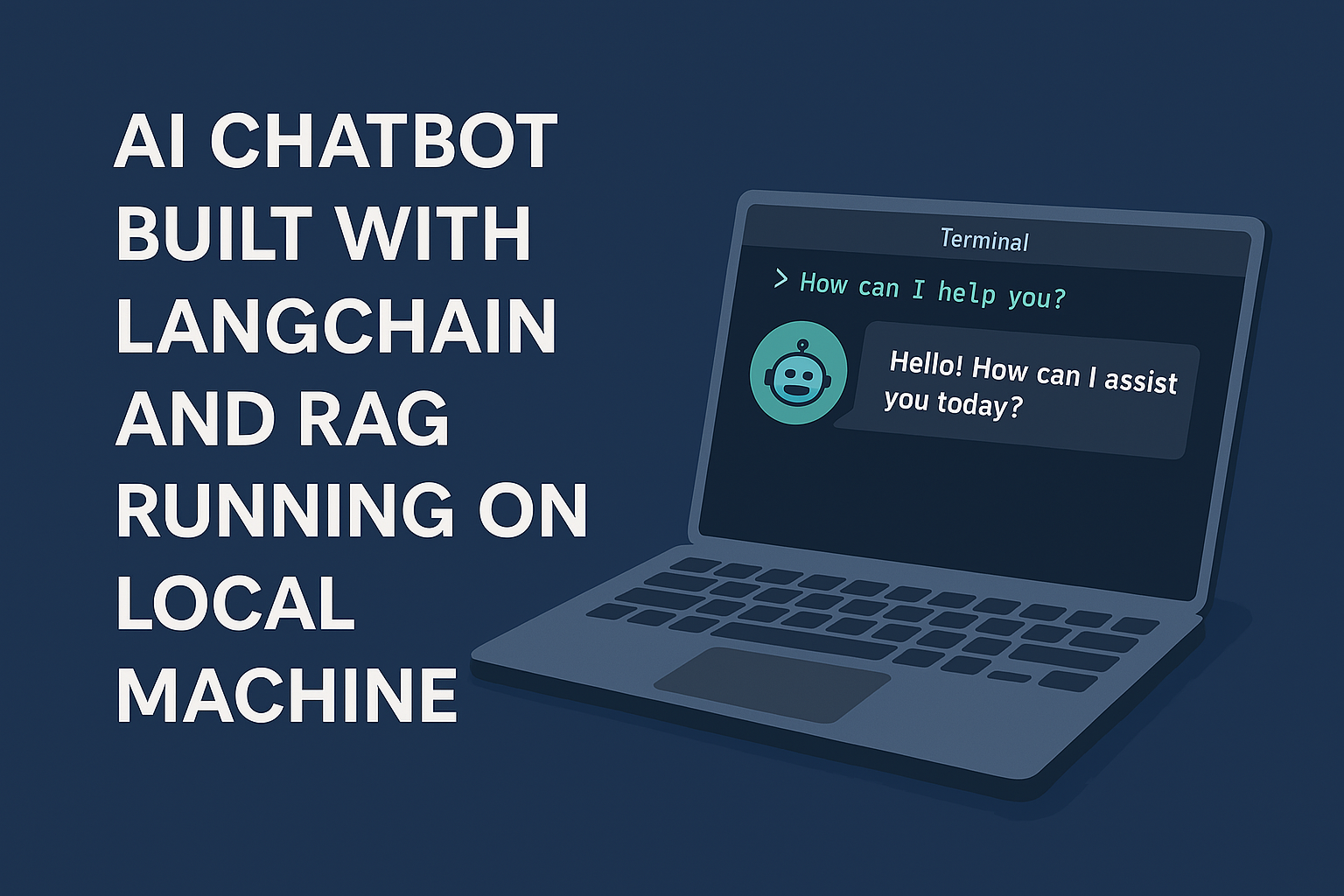Custom AI chatbots are no longer limited to big tech companies. With open-source tools like LangChain and RAG (Retrieval-Augmented Generation), developers can now create highly personalized, private, and smart chatbots using their own data – without relying on OpenAI or external APIs.
In this guide, we’ll cover:
- What is LangChain and RAG?
- Why use your own data?
- Step-by-step setup
- Embedding, vector databases, and query flows
- Deploying your chatbot
- Final thoughts on production best practices
🧠 What is LangChain?
LangChain is a Python (and JS) framework that makes it easy to build LLM-powered applications by chaining together language models, memory, tools, and your own data sources.
LangChain is built to answer questions, summarize content, analyze documents, and more.
🔍 What is RAG (Retrieval-Augmented Generation)?
RAG is a technique that improves LLM responses by:
- Retrieving relevant data (e.g., from PDFs, docs, websites)
- Augmenting the prompt to the language model with that data
- Generating a context-aware answer
This avoids the “hallucination” problem and ensures the answers are grounded in real, verifiable content – like your company docs or product FAQs.
💡 Why Use RAG with Your Own Data?
- Keep data private
- Answer domain-specific queries accurately
- Avoid vendor lock-in (e.g., OpenAI)
- Integrate internal knowledge bases, manuals, wikis, etc.
- Works even with open-source local LLMs
⚙️ Step-by-Step Setup (LangChain + RAG)
Here’s how to create a simple RAG-powered chatbot with LangChain and your local data.
1. Install Dependencies
pip install langchain chromadb openai tiktoken sentence-transformersOr use llama-index, haystack, or qdrant as alternatives.
2. Load and Split Your Documents
from langchain.document_loaders import TextLoader
from langchain.text_splitter import RecursiveCharacterTextSplitter
loader = TextLoader("your-data.txt")
docs = loader.load()
splitter = RecursiveCharacterTextSplitter(chunk_size=500, chunk_overlap=50)
chunks = splitter.split_documents(docs)3. Create Embeddings & Store in a Vector DB
from langchain.vectorstores import Chroma
from langchain.embeddings import OpenAIEmbeddings
db = Chroma.from_documents(chunks, OpenAIEmbeddings())You can also use SentenceTransformerEmbeddings to avoid OpenAI.
4. Build Your RAG Chain
from langchain.chains import RetrievalQA
from langchain.llms import OpenAI
qa = RetrievalQA.from_chain_type(
llm=OpenAI(),
retriever=db.as_retriever()
)
response = qa.run("What is our refund policy?")
print(response)You can swap OpenAI() with Ollama() for a self-hosted local model like Mistral or LLaMA.
🛠️ Optional: Use LangChain with Streamlit for UI
pip install streamlitimport streamlit as st
query = st.text_input("Ask me anything:")
if query:
st.write(qa.run(query))Now you have a simple private chatbot UI!
📦 Vector Databases to Use
Popular vector DBs for RAG pipelines:
- ChromaDB – Lightweight and local
- Pinecone – SaaS, scalable
- Qdrant – Rust-based, blazing fast
- Weaviate – Great integrations
- FAISS – Facebook’s fast classic
🚀 Deployment Tips
- Run locally with Ollama (for private LLMs)
- Use Docker + FastAPI or Streamlit for UI
- Add authentication + logging
- Use
langchain-callbacksfor observability - Deploy on GPU cloud like RunPod, Modal, or Lambda
✅ Final Thoughts
LangChain + RAG lets developers move from “generic chatbot” to “smart AI on your data” – with full control over accuracy, security, and scalability.
Whether you’re building an internal tool, customer support assistant, or documentation bot, this setup gives you flexibility without sacrificing intelligence.
If you can write a Python script, you can build your own AI chatbot. And now, you can do it without an API key.

Leave a Reply